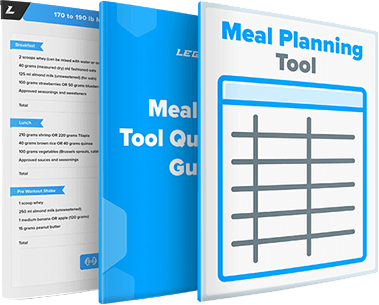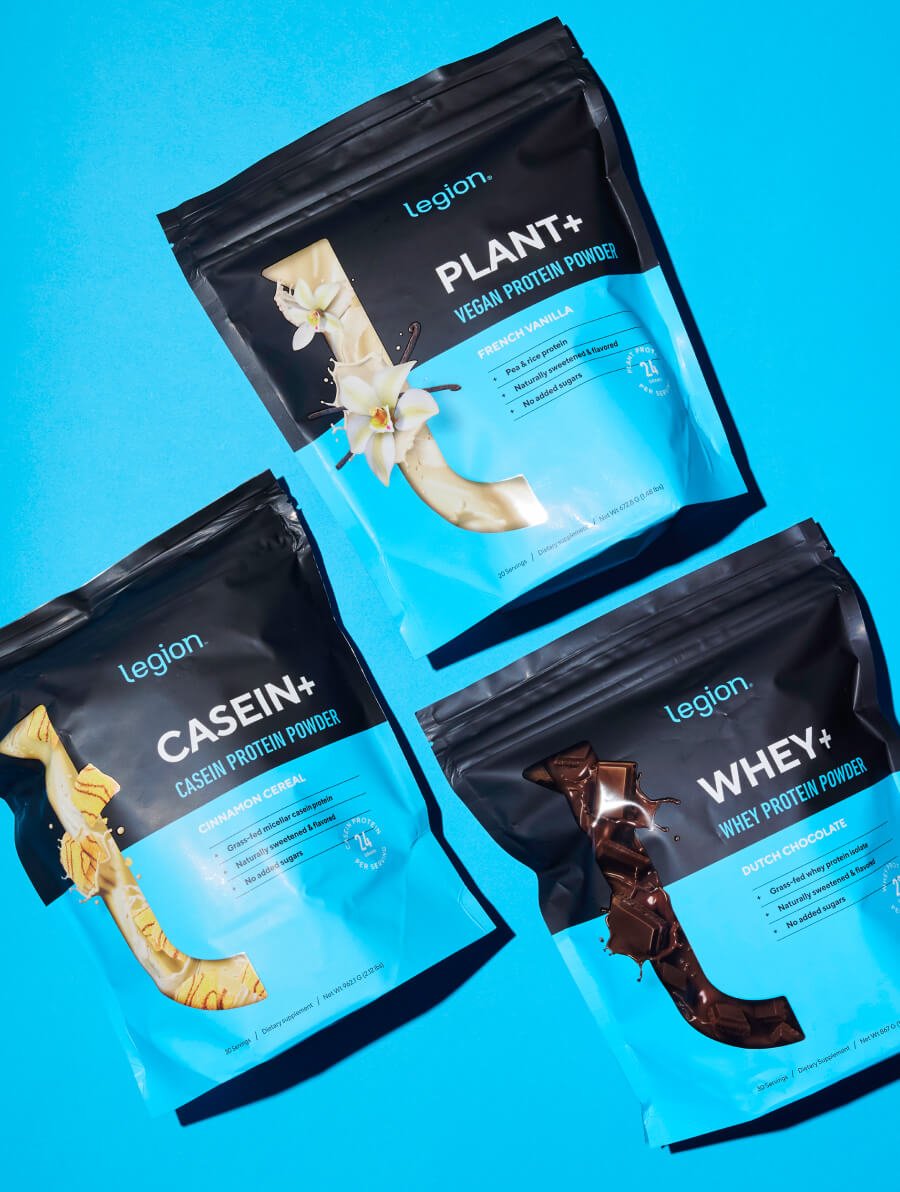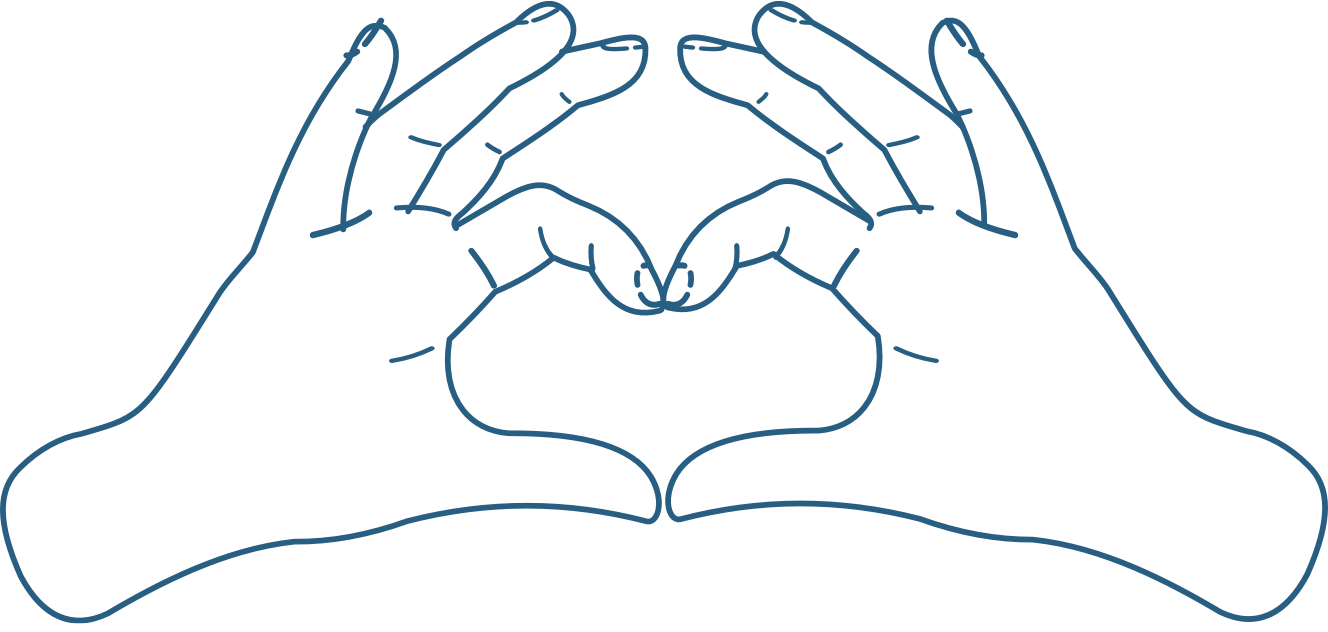Listen on Apple Podcasts | Listen on Spotify | Listen on YouTube
For many people, ibuprofen, naproxen, and acetaminophen are godsends.
Whenever they feel a niggling ache or pain, they pop a pill and feel right as rain.
Elbow pain from benching? No problem.
Knee pain from squatting? Nothing a few pills can’t fix.
Shoulder pain from overhead press? Not today.
Have a bad case of DOMS? NBD, man.
Take a few pills, and you’ll be able to push through workouts that might otherwise keep you sidelined.
And others even take these over-the-counter (OTC) painkillers on a regular basis, just in case something starts to hurt.
If you’ve read anything about these drugs, though, then you may have heard that they can also interfere with muscle growth.
Some even go so far as to say that you should avoid them at all costs. It’s better to stay home and wait for your body to heal itself than to take a pill that kills your gains.
Who’s right, and what should you do?
That’s what you’re going to learn in this podcast. By the end, you’ll know how painkillers affect muscle growth, whether or not taking them will interfere with strength and muscle gain, and how to balance the pros and cons to get the best of both worlds.
Let’s get started.
What did you think of this episode? Have anything else to share? Let me know in the comments below!
Transcript:
Hey, Mike here. And if you like what I’m doing on the podcast and elsewhere, and if you want to help me help more people get into the best shape of their lives, please consider checking out my VIP one on one coaching service, where we can help you get in the best shape of your life. life. My team and I have helped people of all ages, circumstances, and needs.
So no matter how complicated or maybe even hopeless you might think your situation is, we will figure it out and we will get you results. Every diet is different. And every training program is 100 percent custom. We provide daily workout logs and do weekly accountability calls. Our clients get priority email service and discounts on supplements and other products.
And the list of benefits goes on and on. So to learn more. Head over to www. LegionAthletics. com slash coaching. That’s L E G I O N Athletics dot com slash coaching and schedule your free consultation call. I should also mention that there is usually a wait list and new slots do fill up very quickly. Do not wait.
If this sounds even remotely interesting to you, go ahead and schedule your call. Now, again, that URL is legionathletics. com slash coaching. Many people say that painkillers can hinder muscle and strength gain, but how true is it? Is that can these drugs actually slow down your gains? And if so, how significant are their effects?
Those are the questions that I’m going to be answering in this podcast. Okay, so let’s start with a quick summary of these drugs. Painkillers are drugs that are used to either reduce the feeling of pain or block the nervous system signals that make us feel pain. And broadly speaking, there are two types of painkillers.
Two types of painkillers. There are non steroidal anti inflammatory drugs or NSA IDs and opioids. And for the purposes of this discussion, I’m going to be focusing on the former. I’m going to be focusing on NSA IDs. These drugs include the painkillers most often taken by people like ibuprofen, or Advil, naproxen, or Aleve, aspirin, and so forth.
And they work to reduce pain, fever, and swelling by inhibiting the production of molecules that are involved in the body’s inflammatory response, its inflammatory process. Now, these molecules, which are called icosanoids and prostaglandins, are involved in pain signaling in the body and the recruitment of immune cells.
And what NSAIDs do is, they inhibit the activity of an enzyme that’s used to produce the icosanoid and prostaglandin molecules. And you might have heard of this enzyme, it’s shortened name, it’s acronym is COX, C O X. Now there are two types of COX enzymes in the body. You have COX 1 and COX 2 enzymes and NSAIDs work to inhibit the activity of both of them.
Now this is quite different from how opioids work. Opioids block pain signaling in the central nervous system. So they don’t reduce inflammation and they don’t reduce pain signals. They just prevent you from perceiving them. Now, we know why most people take NSAIDs every so often, or even frequently. It’s just to deal with random aches and pains.
Headaches and joint issues are probably the two most common reasons why people take these drugs. Again, Every so often or often. However, there are quite a few people into fitness, quite a few serious fitness people out there who take these drugs fairly frequently as well. And the reason is similar because if you train frequently and you train intensely, you are going to run into nagging aches and pains here and there.
You are going to run into joint issues, sometimes extreme muscle soreness muscle tweaks and so forth. Now with NSAIDs, then you can train around the pain. You don’t have to wait for these things to heal. You can just push through them. Now the drugs don’t help you heal faster, of course. They just make you feel better so you can get in the gym and do what you need to do.
Now, as far as healing and recovery goes, that is not ideal because you are continually aggravating the problem, which is just going to make it take longer to heal. So you don’t have to continue taking drugs. Now as far as muscle growth goes, many people don’t know this, but inflammation plays an important role in muscle building.
And so anything that acutely reduces inflammation can get in the way of that. Specifically, when you train your muscles, you are damaging them to some degree and this results in some degree of inflammation and that inflammation is part of the recovery process. It’s part of what drives the adaptations that result in bigger and stronger muscles.
Now, of course, there needs to be a balance here, right? Because if you have too much inflammation in the body and in the muscles, that gets in the way of muscle and strength gain. And if you have too little, that also gets in the way in that you could be progressing quicker if there were higher levels of inflammation.
Now, given that NSAIDs are very effective at inhibiting the activity of COX enzymes and thus the production of eicosanoids and prostaglandins, and that prostaglandins are involved in the muscle building process, and also given that NSAIDs inhibit the activity of other molecules related to muscle building and have been shown to reduce muscle protein synthesis rates, it is theorized that taking these drugs often enough Will significantly impair your muscle and strength gains.
And there’s research to back that up. For example, in one study, young, active, healthy men and women who are not into resistance training previously were given 1200 milligrams of ibuprofen per day. And they gained about 50 percent less muscle than the group that was given a low dose of aspirin every day.
And that was over an eight week period. On the other hand, in a study that was conducted with young active men, 400 milligrams of ibuprofen per day was not enough to have any appreciable impact on muscle gain. So it’s probably fair to say then that if you are trying to maximize muscle and strength gains, you do not want to be taking high doses of NSAIDs daily or even semi frequently.
That said, shorter, less frequent, lower doses of these drugs isn’t likely to get in the way of your muscle and strength gain. However, there are still more questions to be answered from further research. For example, we know that older people respond differently to these drugs. In one study with older adults, with the average age being 67 years old, four grams of acetaminophen or Tylenol, which isn’t an NSA ID, but it is a pain reliever or 1200 milligrams of ibuprofen per day actually resulted in more muscle gain than a placebo.
Now, one reason for this could be that older people tend to have more joint issues, more joint pain, more joint inflammation. And that of course gets in the way of training and especially training intensely and progressing. So it is possible that while the NSA ID. That they were taking in this case, the ibuprofen did actually impair muscle gain to some degree, having joint problems and not being able to train effectively impaired it quite a bit more.
Hey, quickly, before we carry on, if you are liking my podcast, would you please help spread the word about it? Because no amount of marketing or advertising gimmicks can match the power of word of mouth. If you are enjoying this episode and you think of someone else who might enjoy it as well, please do tell them about it.
It really helps me. And if you are going to post about it on social media, definitely tag me so I can say, Thank you. You can find me on Instagram at muscle for life fitness, Twitter at muscle for life and Facebook at muscle for life fitness. So should you be taking painkillers? And if you are taking them, should you be worried about their impacts on your muscle and strength gain?
I would say if you are taking painkillers to avoid training related injuries. Problems training related aches and pains. It’s probably a bad idea. And if you’re taking those drugs to train through those, that is probably a bad idea. Instead, you should allow your body to heal properly. And if that means that you have to actually train around issues, then do that.
Meaning avoid exercises that are aggravating, whatever the problem is, taking extra rest, eating extra calories, making sure you’re not in a calorie deficit and so forth. And that can be annoying. I know I’ve been there. I’ve had biceps tendonitis, for example, in my right arm that has come and gone over the last couple of years and for extended periods of time, I had to avoid certain exercises like a normal bench press.
For example, I didn’t do a normal bench press for probably four months or so. While I was getting certain muscles that were just too tight in my body worked on to alleviate the issue, which was really in the bicipital groove, tissues were just getting stuck and not moving the way that they were supposed to.
And so instead what I did is close grip bench press because I found that didn’t aggravate the problem. And so I got good at my close grip bench press. I avoided a normal bench press for a number of months and did a lot of close grip bench pressing. Also found that low flies. We’re fine as well that didn’t aggravate the problem whereas a mid fly or a high flight did so I avoided those I Avoided dips also because those aggravated the problem and so forth and the good news is eventually the problem went away Because I was working with a rolfer actually, but he’s a kind of like a multidisciplinary Physical therapist kind of guy and we knew which muscles needed to be worked on in that case It was the longissimus muscles You and also some of the rotator cuff muscles that were just too tight.
And that had been an issue that was growing over time. And eventually it just manifested in biceps tendonitis. So we knew that if we could just stop aggravating the biceps tendon and address the tight muscles that were preventing everything from moving the way it’s supposed to, we could get rid of the problem.
And so that’s what we did. Anyway, back to the point of whether you should take NSA IDs or not. So if you’re, again, if you’re trying to avoid training related injuries or pains or aches, that’s not a good reason. However, if you have a medical reason for taking these drugs, then by all means follow the advice of your doctor.
And as far as your muscle building goes, I think it’s fair to say that taking high doses of these drugs regularly is going to impair your gains. But taking lower doses Every now and then is probably not gonna cause any problems. Hey, Mike here and if you like what I’m doing on the podcast and elsewhere, and if you want to help me help more people get into the best shape of their lives, please consider checking out my VIP one-on-one coaching service where we can help you get in the best shape of your.
life. My team and I have helped people of all ages, circumstances, and needs. So no matter how complicated or maybe even hopeless you might think your situation is, we will figure it out, and we will get you results. Every diet is different. And every training program is 100 percent custom. We provide daily workout logs and do weekly accountability calls.
Our clients get priority email service and discounts on supplements and other products. And the list of benefits goes on and on. To learn more, head over to www. legionathletics. com slash coaching That’s l e g i o n athletics dot com slash coaching and schedule your free consultation call. I should also mention that there is usually a waitlist and new slots do fill up very quickly so do not wait if this sounds even remotely interesting to you.
Go ahead and schedule your call now. Again that url is legionathletics. com slash coaching.
Scientific References +
- Trappe, T. A., Carroll, C. C., Dickinson, J. M., LeMoine, J. K., Haus, J. M., Sullivan, B. E., Lee, J. D., Jemiolo, B., Weinheimer, E. M., & Hollon, C. J. (2011). Influence of acetaminophen and ibuprofen on skeletal muscle adaptations to resistance exercise in older adults. American Journal of Physiology - Regulatory Integrative and Comparative Physiology, 300(3), R655. https://doi.org/10.1152/ajpregu.00611.2010
- Krentz, J. R., Quest, B., Farthing, J. P., Quest, D. W., & Chilibeck, P. D. (2008). The effects of ibuprofen on muscle hypertrophy, strength, and soreness during resistance training. Applied Physiology, Nutrition, and Metabolism, 33(3), 470–475. https://doi.org/10.1139/H08-019
- Lilja, M., Mandić, M., Apró, W., Melin, M., Olsson, K., Rosenborg, S., Gustafsson, T., & Lundberg, T. R. (2018). High doses of anti-inflammatory drugs compromise muscle strength and hypertrophic adaptations to resistance training in young adults. Acta Physiologica, 222(2), e12948. https://doi.org/10.1111/apha.12948
- Schoenfeld, B. J. (2012). The use of nonsteroidal anti-inflammatory drugs for exercise-induced muscle damage: implications for skeletal muscle development. Sports Medicine (Auckland, N.Z.), 42(12), 1017–1028. https://doi.org/10.1007/BF03262309
- Muñoz-Cánoves, P., Scheele, C., Pedersen, B. K., & Serrano, A. L. (2013). Interleukin-6 myokine signaling in skeletal muscle: A double-edged sword? In FEBS Journal (Vol. 280, Issue 17, pp. 4131–4148). Wiley-Blackwell. https://doi.org/10.1111/febs.12338
- Horsley, V., & Pavlath, G. K. (2003). Prostaglandin F2α stimulates growth of skeletal muscle cells via an NFATC2-dependent pathway. Journal of Cell Biology, 161(1), 111–118. https://doi.org/10.1083/jcb.200208085
- Dalle, S., Rossmeislova, L., & Koppo, K. (2017). The role of inflammation in age-related sarcopenia. In Frontiers in Physiology (Vol. 8, Issue DEC). Frontiers Media S.A. https://doi.org/10.3389/fphys.2017.01045
- Tezze, C., Romanello, V., Desbats, M. A., Fadini, G. P., Albiero, M., Favaro, G., Ciciliot, S., Soriano, M. E., Morbidoni, V., Cerqua, C., Loefler, S., Kern, H., Franceschi, C., Salvioli, S., Conte, M., Blaauw, B., Zampieri, S., Salviati, L., Scorrano, L., & Sandri, M. (2017). Age-Associated Loss of OPA1 in Muscle Impacts Muscle Mass, Metabolic Homeostasis, Systemic Inflammation, and Epithelial Senescence. Cell Metabolism, 25(6), 1374-1389.e6. https://doi.org/10.1016/j.cmet.2017.04.021
- V, P., & J, H. (2003). Muscle injuries and repair: the role of prostaglandins and inflammation. Histology and Histopathology, 18(4), 1243–1256. https://doi.org/10.14670/HH-18.1243
- Chazaud, B., Sonnet, C., Lafuste, P., Bassez, G., Rimaniol, A. C., Poron, F., Authier, F. J., Dreyfus, P. A., & Gherardi, R. K. (2003). Satellite cells attract monocytes and use macrophages as a support to escape apoptosis and enhance muscle growth. Journal of Cell Biology, 163(5), 1133–1143. https://doi.org/10.1083/jcb.200212046
- Journal, I., & Factor, I. (2015). BioMed Research International ( J BIOMED BIOTECHNOL ). Computational and Mathematical Methods in Medicine, 2015, 2–4. https://doi.org/10.1155/2015
- Wåhlin-Larsson, B., Carnac, G., & Kadi, F. (2014). The influence of systemic inflammation on skeletal muscle in physically active elderly women. Age, 36(5), 9718. https://doi.org/10.1007/s11357-014-9718-0
- Degens, H. (2010). The role of systemic inflammation in age-related muscle weakness and wasting. Scandinavian Journal of Medicine & Science in Sports, 20(1), 28–38. https://doi.org/10.1111/j.1600-0838.2009.01018.x
- What is an inflammation? - InformedHealth.org - NCBI Bookshelf. (n.d.). Retrieved May 7, 2020, from https://www.ncbi.nlm.nih.gov/books/NBK279298/
- Cottler, L. B., Ben Abdallah, A., Cummings, S. M., Barr, J., Banks, R., & Forchheimer, R. (2011). Injury, pain, and prescription opioid use among former National Football League (NFL) players. Drug and Alcohol Dependence, 116(1–3), 188–194. https://doi.org/10.1016/j.drugalcdep.2010.12.003
- The role of nonsteroidal anti-inflammatory drugs in the treatment of acute soft tissue injuries. - PubMed - NCBI. (n.d.). Retrieved May 7, 2020, from https://www.ncbi.nlm.nih.gov/pubmed/16558472
- Ziltener, J. L., Leal, S., & Fournier, P. E. (2010). Non-steroidal anti-inflammatory drugs for athletes: An update. In Annals of Physical and Rehabilitation Medicine (Vol. 53, Issue 4, pp. 278–288). Elsevier Masson. https://doi.org/10.1016/j.rehab.2010.03.001
- Chou, R., & Huffman, L. H. (2007). Medications for acute and chronic low back pain: A review of the evidence for an American Pain Society/American College of Physicians clinical practice guideline. In Annals of Internal Medicine (Vol. 147, Issue 7, pp. 505–514). American College of Physicians. https://doi.org/10.7326/0003-4819-147-7-200710020-00008
- Mallappallil, M., Sabu, J., Friedman, E. A., & Salifu, M. (2017). What do we know about opioids and the kidney? In International Journal of Molecular Sciences (Vol. 18, Issue 1). MDPI AG. https://doi.org/10.3390/ijms18010223
- Kapusta, D. R., Jones, S. Y., & DiBona, G. F. (1991). Renal mu opioid receptor mechanisms in regulation of renal function in rats. Journal of Pharmacology and Experimental Therapeutics, 258(1), 111–117. https://www.ncbi.nlm.nih.gov/pubmed/1677034
- Terenius, L. (1976). Opioid receptors and their ligands. Acta Physiologica Scandinavica, 98(SUP440). https://doi.org/10.2174/1568026043451618
- Somasundaram, Sigthorsson, Simpson, Watts, Jacob, Tavares, Rafi, Roseth, Foster, Price, Wrigglesworth, & Bjarnason. (2000). Uncoupling of intestinal mitochondrial oxidative phosphorylation and inhibition of cyclooxygenase are required for the development of NSAID-enteropathy in the rat. Alimentary Pharmacology and Therapeutics, 14(5), 639–650. https://doi.org/10.1046/j.1365-2036.2000.00723.x
- Wolfe, L. S. (1982). Eicosanoids: Prostaglandins, Thromboxanes, Leukotrienes, and Other Derivatives of Carbon‐20 Unsaturated Fatty Acids. Journal of Neurochemistry, 38(1), 1–14. https://doi.org/10.1111/j.1471-4159.1982.tb10847.x










